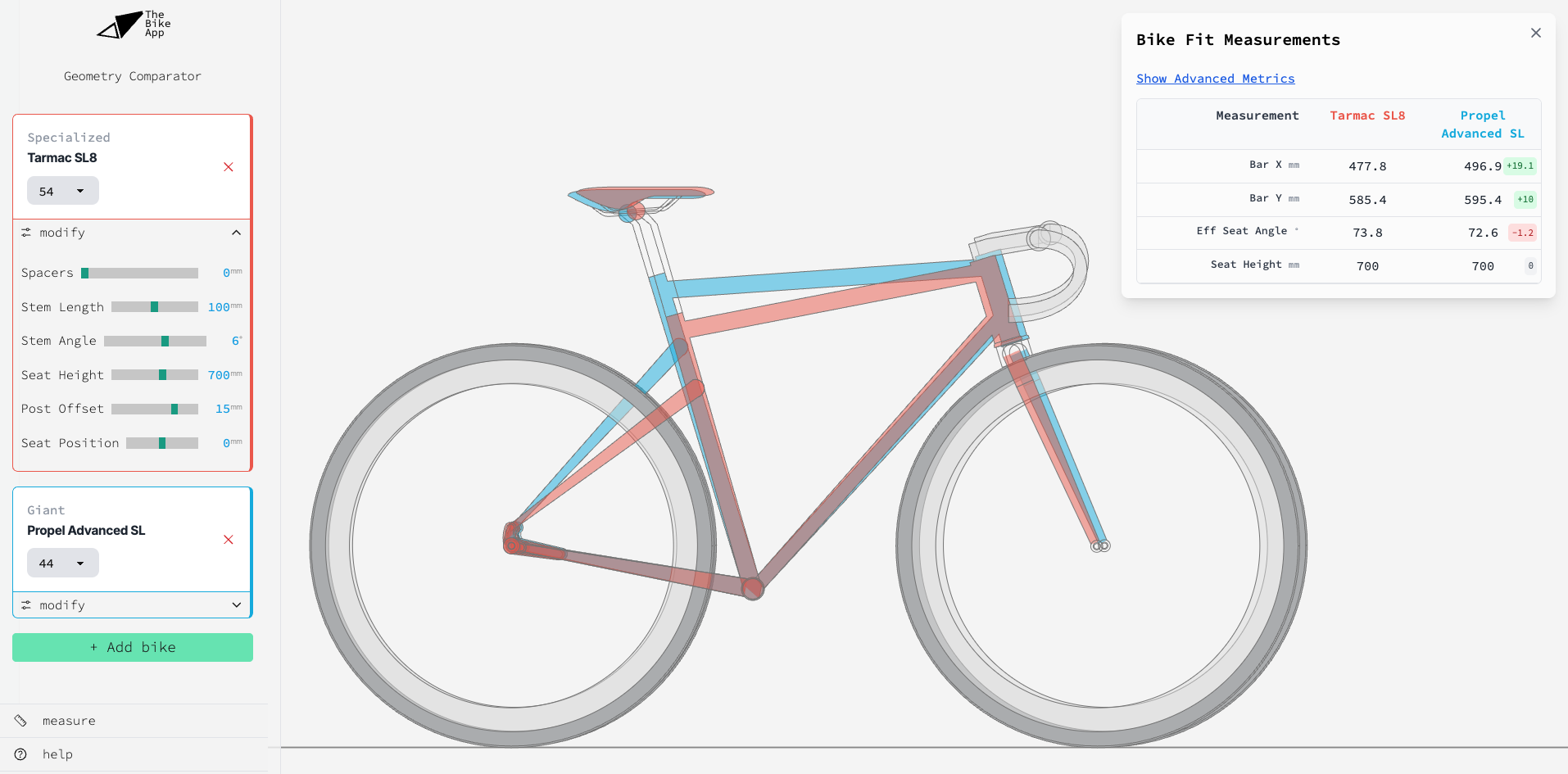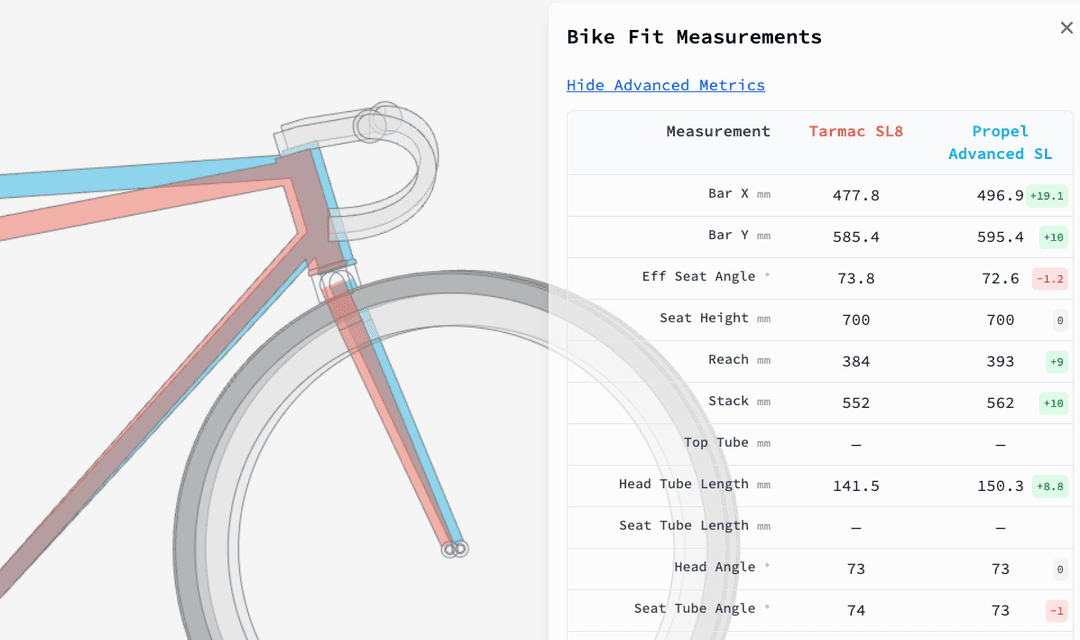Compare Geometries
Compare any brand, model and size bikes from our database. Modify components, analyze frame geometry and more!

Analyze bike geometries. Compare thousands of bikes.
How to compare bikes

Select bikes to compare
Choose 2 bikes from our database. Filter by brand, year, model and size. This bike will automatically upload.

Personalize your bike setup
Modify the stem, handlebars, seat placement, wheels and tire setup to better reflect your individual preferences

Analyze the differences
View the difference between the 2 setups with an overlay of the technical bike drawings combined with charts of the differences
Frenquently Asked Questions
What is a bike geometry?
Bike geometry refers to the physical dimensions and angles of a bicycle frame and its components, such as the length of the frame tubes, the angles at which they intersect, and the positioning of the various parts like the handlebars, saddle, and pedals. These factors collectively determine how a bike fits a rider and how it handles on the road or trail.
How to compare bike geometries?
When comparing 2 different geometries together, it's important to know what it is we want to compare. For instance, if we want to compare the "fit" of a bike, we'll look at the reach, stack and seat angle. If we want to compare the way the bike handles, we'll look at the wheelbase, head angle, and center of mass. The geometry comparator on thebikeapp differenciate all these factors into different subsets of feilds to bettter make sense of it all.
What is considered a "good" bike geometry?
What makes a bike geometry "good" depends on the rider's body dimensions and riding preferences. Therfore there is no such thing as an ultimate geometry for all riding.